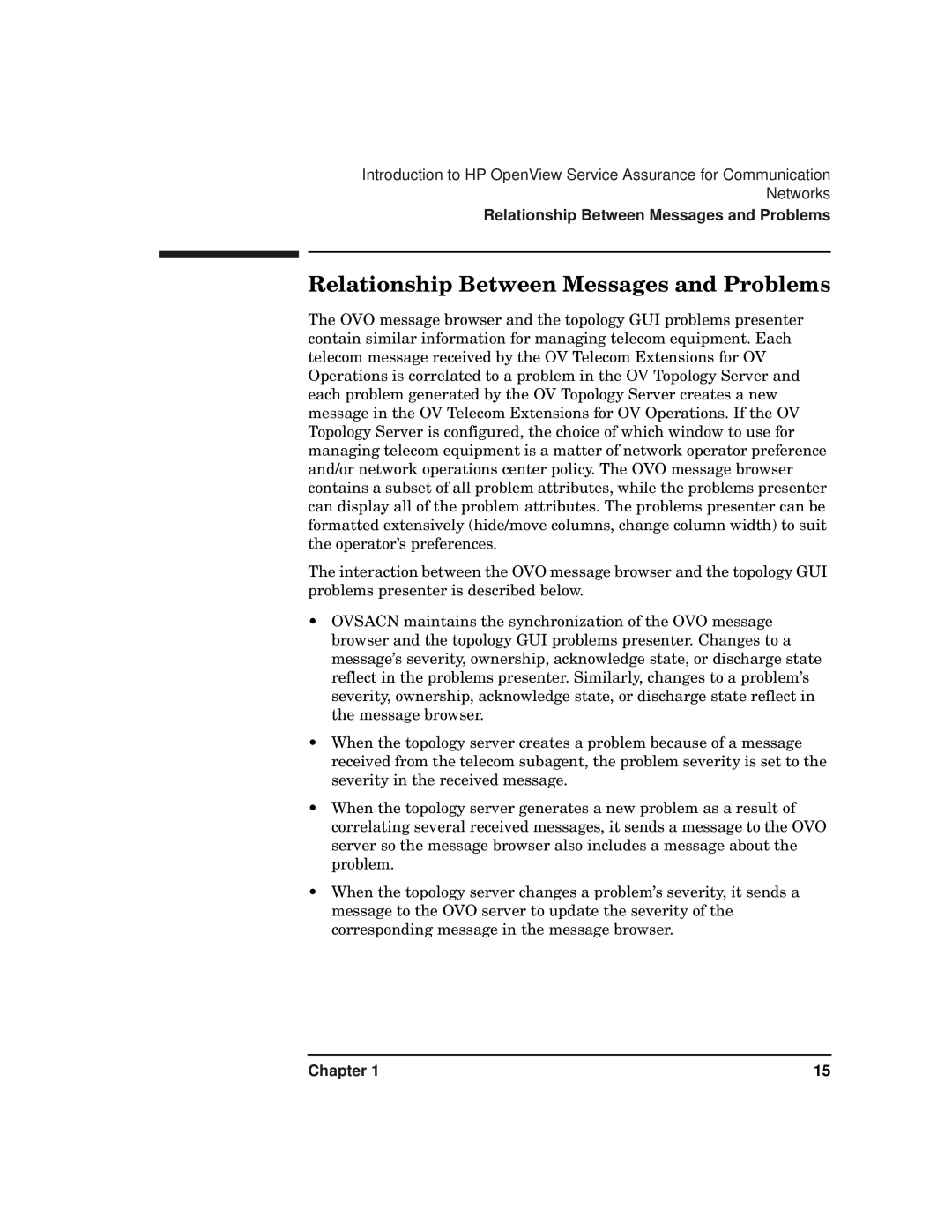
Introduction to HP OpenView Service Assurance for Communication Networks
Relationship Between Messages and Problems
Relationship Between Messages and Problems
The OVO message browser and the topology GUI problems presenter contain similar information for managing telecom equipment. Each telecom message received by the OV Telecom Extensions for OV Operations is correlated to a problem in the OV Topology Server and each problem generated by the OV Topology Server creates a new message in the OV Telecom Extensions for OV Operations. If the OV Topology Server is configured, the choice of which window to use for managing telecom equipment is a matter of network operator preference and/or network operations center policy. The OVO message browser contains a subset of all problem attributes, while the problems presenter can display all of the problem attributes. The problems presenter can be formatted extensively (hide/move columns, change column width) to suit the operator’s preferences.
The interaction between the OVO message browser and the topology GUI problems presenter is described below.
•OVSACN maintains the synchronization of the OVO message browser and the topology GUI problems presenter. Changes to a message’s severity, ownership, acknowledge state, or discharge state reflect in the problems presenter. Similarly, changes to a problem’s severity, ownership, acknowledge state, or discharge state reflect in the message browser.
•When the topology server creates a problem because of a message received from the telecom subagent, the problem severity is set to the severity in the received message.
•When the topology server generates a new problem as a result of correlating several received messages, it sends a message to the OVO server so the message browser also includes a message about the problem.
•When the topology server changes a problem’s severity, it sends a message to the OVO server to update the severity of the corresponding message in the message browser.
Chapter 1 | 15 |
